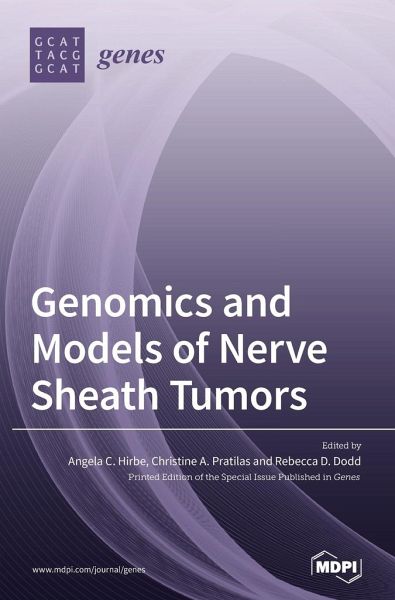
Genomics and Models of Nerve Sheath Tumors
Versandkostenfrei!
Versandfertig in 1-2 Wochen
58,99 €
inkl. MwSt.

PAYBACK Punkte
29 °P sammeln!
Nerve sheath tumors can be a significant cause of morbidity for many patients. These include benign tumors such as schwannomas, diffuse and plexiform neurofibromas, and atypical neurofibromas, as well as the aggressive soft tissue sarcoma known as the malignant peripheral nerve sheath tumor (MPNST). Nerve sheath tumors occur sporadically and in the context of the clinical neuro-genetic tumor predisposition syndromes neurofibromatosis type 1 (NF1) and type 2 (NF2). Historically, the mainstay of treatment for nerve sheath tumors has been surgery. However, for both benign and malignant nerve shea...
Nerve sheath tumors can be a significant cause of morbidity for many patients. These include benign tumors such as schwannomas, diffuse and plexiform neurofibromas, and atypical neurofibromas, as well as the aggressive soft tissue sarcoma known as the malignant peripheral nerve sheath tumor (MPNST). Nerve sheath tumors occur sporadically and in the context of the clinical neuro-genetic tumor predisposition syndromes neurofibromatosis type 1 (NF1) and type 2 (NF2). Historically, the mainstay of treatment for nerve sheath tumors has been surgery. However, for both benign and malignant nerve sheath tumors, there is a high recurrence rate, highlighting the pressing need for novel therapies. As we have entered the genomic era, the hope is that an improved understanding of the genetics, and therefore the biology, of these tumors will ultimately lead to therapies that result in better outcomes. In this Special Issue, we include both review articles and original research related to the genomic understanding and modeling of schwannomas, plexiform and diffuse neurofibromas, atypical neurofibromas, and malignant peripheral nerve sheath tumors as well as genomic methods¿being developed and applied to advance our¿understanding of¿these tumors.












